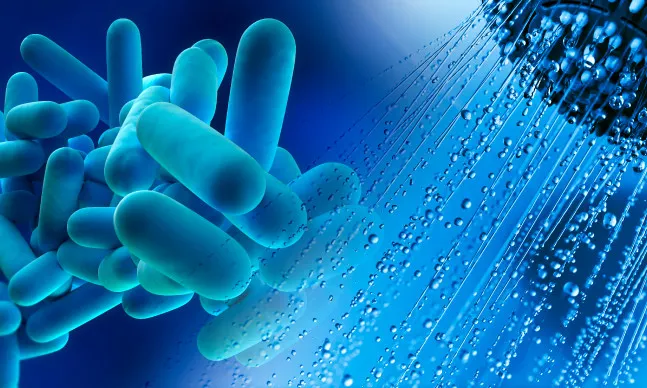Control Programme for Legionella (Legionella spp)





Legionella in water / swab test - Prevention of Legionnaires' disease
What is Legionella?
Legionella is a bacterium that is widespread in nature and can be found in environmental water sources such as rivers, lakes and reservoirs. From the natural source, it passes to sites that are artificial reservoirs (water piped into cities, water systems in individual buildings, etc.). Its growth is favoured in water with a temperature of 20 – 45°C. It cannot multiply at temperatures below 20°C and cannot survive at temperatures above 60°C.
Legionnaires’ disease is usually acquired through the respiratory system by inhaling air containing Legionella spp. bacteria in an aerosol. It is a severe form of pneumonia (infection of the lungs) with a mortality rate of about 5-10%. Symptoms include flu-like illness, followed by a dry cough and progressive change to pneumonia.
Circular No. DYΓ2/ok.70777/12-7-2012 Ministry of Health and Welfare/General Directorate of Hygiene
Circular No D1/GP.32965/27-5-2020 Ministry of Health/General Directorate of Public Health & Quality of Life ‘Prevention of Legionnaires’ disease in the context of the COVID-19 pandemic’.
Where can Legionella bacteria survive and multiply?
In hot and cold water tanks and reservoirs
In pipes with little or no water flow (including unoccupied rooms)
In sediments (bio-membranes) and dirt on the internal surfaces of pipes and tanks
rubber and natural fibres in friction rings and sealing devices
in water heaters and hot water tanks
Salt deposits and corrosion in pipes, showers and taps
In respiratory treatment equipment
In dental unit water lines
In vehicle wash water tanks
In water-cooled machine tools
Which businesses are targeted by the analysis for Legionella in water?
Hotels, tourist facilities, camps and other accommodation facilities
Healthcare establishments (hospitals, clinics, health centres)
Nursing homes
Camps
Correctional institutions
Educational establishments (schools, nurseries, etc.)
Spa facilities
Sports facilities (changing rooms in gyms, stadiums, etc.)
Shopping centres
Leisure, entertainment and exhibition facilities (artificial lakes in amusement parks, etc.)
Places where the public can stay
Cruise ships and liner ships with cabins
Dental clinics
Car washes
According to the Circular No. DYΓ2/oik.70777/12-7-2012 of the Ministry of Health and Welfare/General Directorate of Hygiene, testing for the detection of the bacterium is required twice a year as a minimum.
Our laboratories carry out analyses for the detection of Legionella bacteria in water (ISO 11731 method). Accredited test according to ISO 17025, No 689 ESS
You can contact us for sampling and analysis of water and surface samples using swab.
Read more: Guidelines, European Legionnaires’ Disease Surveillance Network (ELDSNet), ECDC
